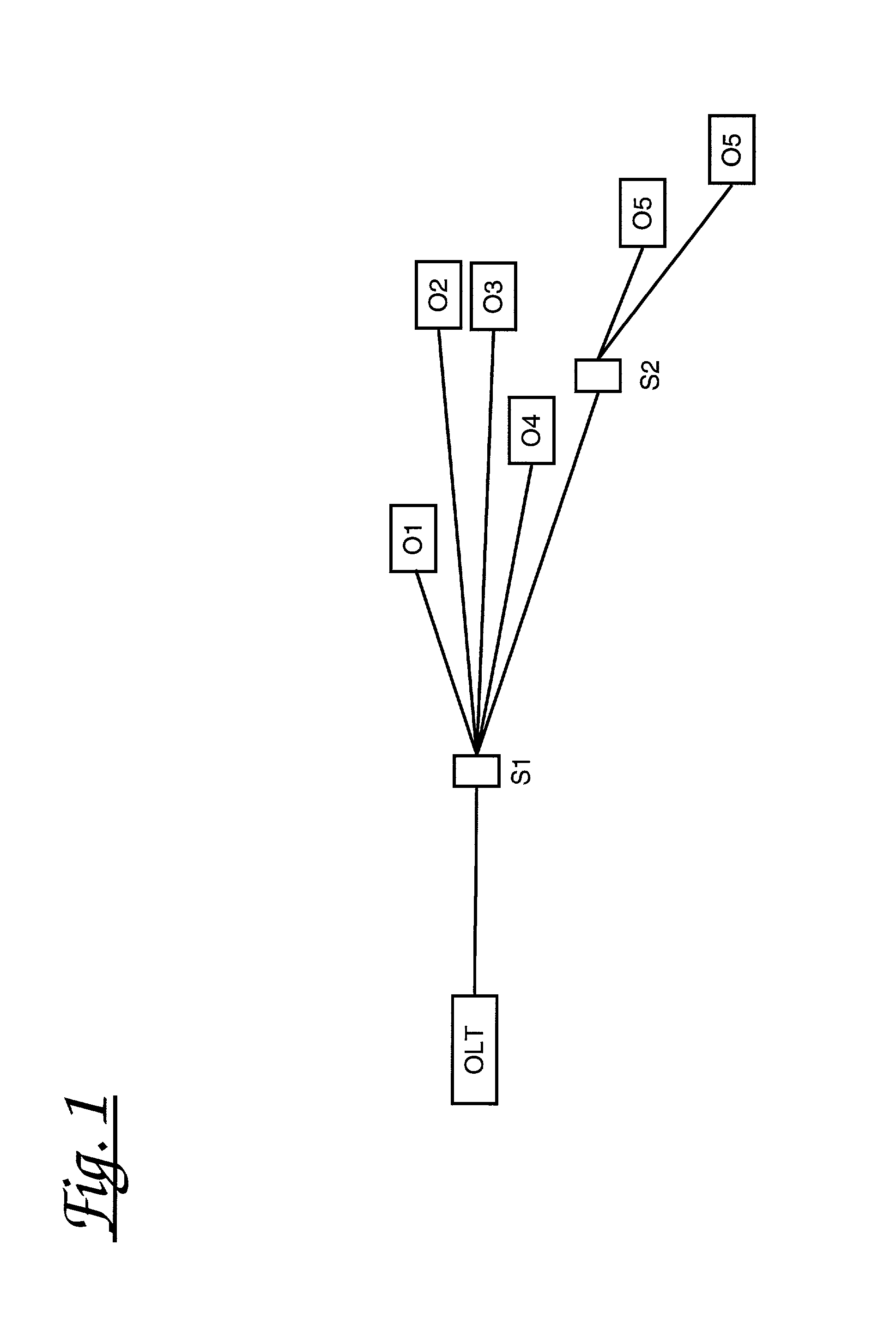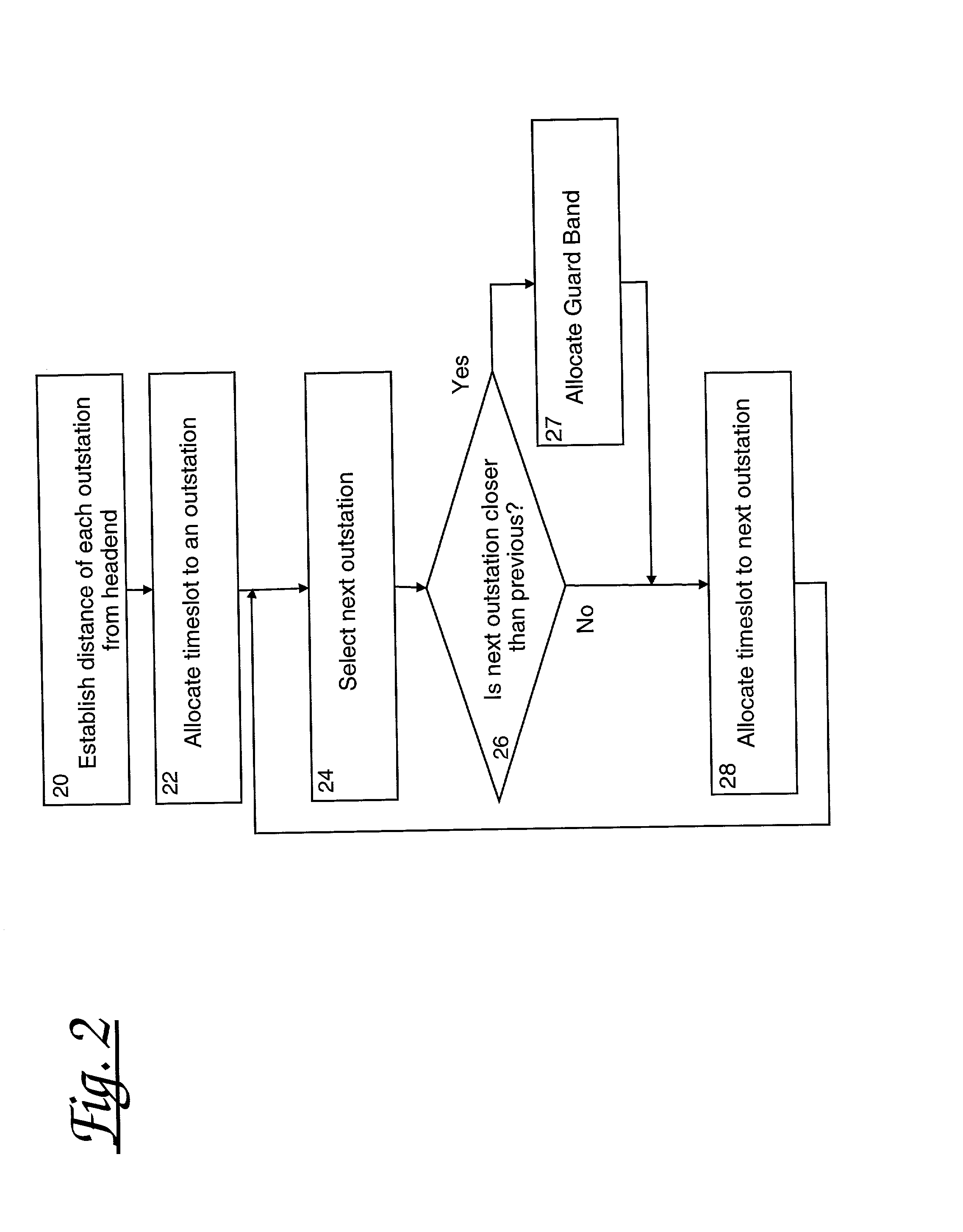Time slot scheduling for shared-medium communications networks
a technology of shared media and time slot scheduling, applied in the field of time slot scheduling for shared media communications networks, can solve the problems of reducing bandwidth efficiency, requiring a bounded transmission delay for many telecommunication services, and reducing bandwidth utilisation efficiency, so as to improve bandwidth utilisation efficiency, reduce complexity of system, and cost-effective infrastructure
- Summary
- Abstract
- Description
- Claims
- Application Information
AI Technical Summary
Benefits of technology
Problems solved by technology
Method used
Image
Examples
Embodiment Construction
[0052] Gigabit Ethernet PONS have been proposed as a means of cost effectively providing fibre access to homes and businesses. Current techniques include a GEPON based on very simple protocols which trade off bandwidth for latency and limited fibre deployment rules, and significantly complex Ethernet PONs with complex marshalling systems for outstation management.
[0053] The present invention provides a simple PON ranging protocol which eliminates these trade-offs and allows GEPONs with large numbers of outstations (e.g. 256 vs currently 16) to be achieved, while simultaneously eliminating differential distance limitations, all at high bandwidth efficiencies.
[0054] This ranging technique will be of particular value for PONs above 1 Gbps and / or 32 way splits.
[0055] This optical aggregation of traffic from smaller businesses will be of increasing importance as optical switching and multiplexing of wavelengths becomes more widespread.
[0056] The invention relates in particular to the imp...
PUM
 Login to View More
Login to View More Abstract
Description
Claims
Application Information
 Login to View More
Login to View More - R&D
- Intellectual Property
- Life Sciences
- Materials
- Tech Scout
- Unparalleled Data Quality
- Higher Quality Content
- 60% Fewer Hallucinations
Browse by: Latest US Patents, China's latest patents, Technical Efficacy Thesaurus, Application Domain, Technology Topic, Popular Technical Reports.
© 2025 PatSnap. All rights reserved.Legal|Privacy policy|Modern Slavery Act Transparency Statement|Sitemap|About US| Contact US: help@patsnap.com



